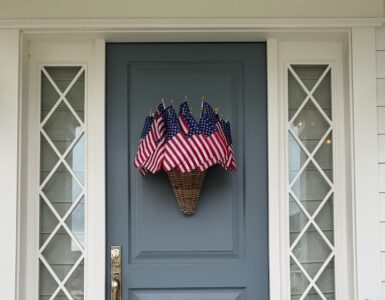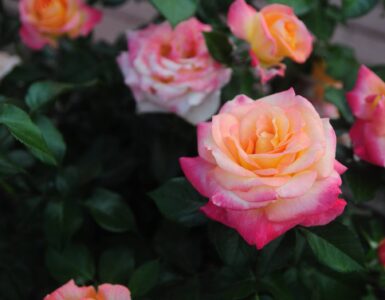Darin Engh, from Engh Gardens highlights some of the trends for 2009.
What’s In:
Natural looking materials, recycled materials. Paisley, and modern prints.
Container Gardens, grasses in all forms, textures and colors are big for containers.
Outdoor living, comfort, and casual homes. Family is key for 2009.
Understated elements, simple casual, plain furniture and garden objects.
Art objects representing nature.
What’s Out:
Gazing globes and tropical prints
Mix of containers that don’t coordinate
Bold primary colors
Overly decorated spaces – simpler is better now.
Over the top garden design, large statues and sculptures.
1 – CONSERVATION
Shade trees equal energy savings
• Shade trees can reduce a home’s electric bill if they’re using energy for cooling in the summer
• Placement of a tree is the key to energy savings. Shade trees do affect summertime electricity use, but the amount of savings depends on the location of the tree. Trees planted within 40 ft of the south side or within 60 ft of the west side of the house will generate about the same amount of energy savings. This is due to the way shadows fall at different times of the day.
• A tree planted on the west side of a house can reduce net carbon emissions from summertime electricity use by 30% over a 100-year period.
• Over a 50-year lifetime, a tree generates $31,250 of oxygen, provides $62,000 worth of air pollution control, recycles $ 37,500 worth of water, and controls $31,250 worth of soil control.
• Give ECO Gifts – give a tree: a gift for life. Dedicate a tree in someone’s honor
Ways to conserve water
• Use mulch around plants. Mulch conserves moisture and keeps plant roots cooler.
• Water deeply and less often instead of more frequent, shallow watering. Thorough watering encourages plants to grow deep, water-seeking roots that can gather moisture from a larger area than can short, shallow roots.
• Create windbreaks – with drought tolerant trees and shrubs. Less wind means less water evaporation. A windbreak can affect an area two to ten times its height!
2 – NATURE HABITATS: PLANTING FOR WILDLIFE
• Yards, no matter how small, have become incredibly important havens for wildlife.
• One simple way to be an eco-booster is to create natural habitats for wildlife with plants that attract birds, bees, and butterflies.
• A tree can provide plenty of leaves and nectar-rich flowers for insects and their larvae to feed on. Bark for insects to live in. Berries and seeds for birds. Shelter and nesting sites.
• By providing different areas to feed, shelter, and breed in, and water to drink, you will make your yard an even better refuge for wildlife. You’ll be rewarded with the pleasure of watching or hearing these wild creatures feed, drink, and move around.
• You can help all the wildlife in your yard to survive for another season by being aware of what they need an making sure that you provide it.
3 – GIY (GROW IT YOURSELF)
• Being able to say “I grew myself” is hip and cool.
• Growing awareness of how food is produced affects its quality and environment
• Appetite for homegrown veggies. Growing your own vegetables can keep you supplied with ready-to-pick crops all year round. The flavor and freshness of what you grow can provide you with the ingredients for a succession of gourmet meals.
• Alternatively, it can offer you the chance to grow some unusual varieties (Heirlooms) that might be more expensive to buy.
4 – ORGANIC
• Simply choose organic methods for healthier food and a healthier environment.
• Organic compost for soil renewal
• Organic fertilizer is now just as convenient as synthetics and is sold in pellet, powder, granule or liquid concentrate. These are the most convenient and easy to use forms: Fish emulsion, sold in jugs of liquid concentrate. Guano, which is potent bat manure packaged for easy application. Composite fertilizer pellets contain animal byproducts and assorted manure. Bulk bags of compost and manure.
• Monrovia Organics – Twelve different types of mycorrhizae are added to our soil mix to create an environment that dramatically increases the life of our plants. Mycorrhiza is a beneficial fungus that develops in and around a plant’s roots, stimulating its nutrient and water uptake, increasing fruit and flower yield, and reducing transplant shock and other environmental stresses. Once you begin adding Monrovia plants to your garden, the mycorrhizae in our soil will begin to spread, benefiting your garden’s ecosystem. You’ll see for yourself that quality soil ensures that plants flourish, making them far more resistant to pests and disease.
5 – RELAX AND RENEW
• Outdoor living continues to boom as the trend for “stay-cations” comes home.
• Homeowners are continuing to extend their spaces by moving plants, décor and accessories outside. It’s easy to expand your home’s boundaries and add indoor charm to your patio, deck, and garden.
• Staying home and entertaining in our “sociable” spaces, and when the sun goes down – dining and playing in comfortable great rooms, enclosed patios, and decks.
6 – BRIGHTEN WITH ANNUALS
• Annuals make a comeback.
• Annuals are the easiest way to brighten your landscape or outdoor living space is with annuals incorporated in small flowers beds or containers.
• New-and-Improved hybrids: more cold- and heat-tolerant annuals, as well as bigger, more vibrant and abundant blooms.
For more information, you can contact Darin at Engh Gardens in Sandy at (801) 748-0102 or online at www.enghgardens.com.














Add comment